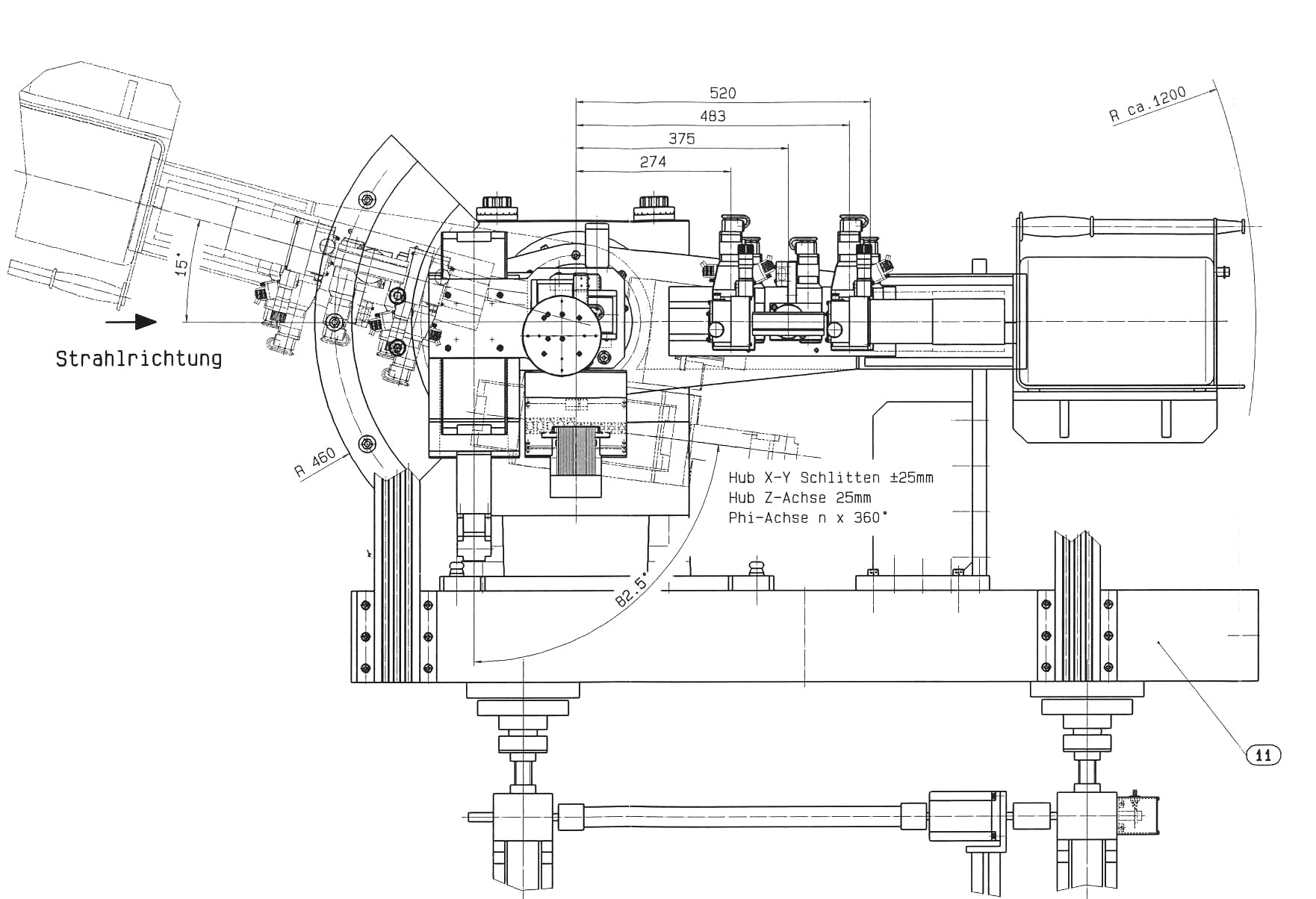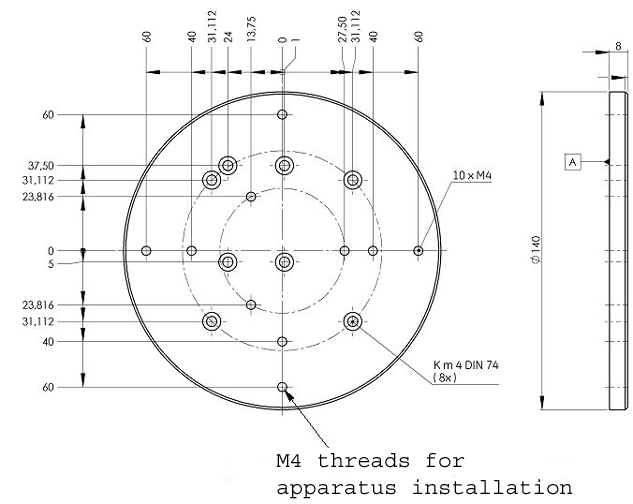Department Microstructure and Residual Stress Analysis
Diffractometer Setup
The EDDI diffractometer is designed by Seifert for the HZB experimental station at Bessy. Since the monochromatic beam of the adjacent experiment is passing in some 300 mm distance to the diffractometer center there have been some demands on the design of the positioning system. Consequently, the 5-axes positioner just allows the chi tilt in one direction, calling for a phi rotation of 180°, if both directions need to be analyzed. A 4-axes positioner is available for heavy parts up to 50 kg. Mind that it is not useable for all applications due to its limited flexibility.

photos: diffractometer side view and zoom up of optical components
technical reference: 5-axes positioner: front, side and top view
technical reference: 4-axes positioner: front, side and top view
Users who bring their own apparatus please consider the sample holder geometry.

technical reference: sample holder plate
Where applicable refer to the hardware limits interconnections.
| general | 4 - circle / 3 - circle diffractometer (depending on positioner) |
| positioner | The 5-axes positioner is based on an Euler cradle. The tolerances of combined omega-chi rotation is less than 90 µm (under extreme condition), the load must not exceed 2 kg. The 4-axes positioner is for measurements in the omega mode. It is designed for heavy parts up to 50 kg. |
| specification | (All specs are given in the order 5-axes / 4-axes) distance d from sample holder to goniometer *if required one of the translation stages (37 mm) as well as the sample plate (8 mm) can be removed for an extra 45 mm in height. |
| slits | 2 precision slits with tungsten blades are available, manual slit width, controlled positioning |
| soller | two identical sollers are available with a divergence of 0.15° |
| detector | 2 germanium detectors and electronics from Canberra are available basically differing in the cooling system resolution: 150 eV at 5,9 keV 500 (520) eV at 122 keV For further details have a look at the Canberra webpage. |
| laser system | adjustment laser and CCD-camera for sample correction in z, tolerance: +-6 µm air conditioning provides constant temperature conditions |
